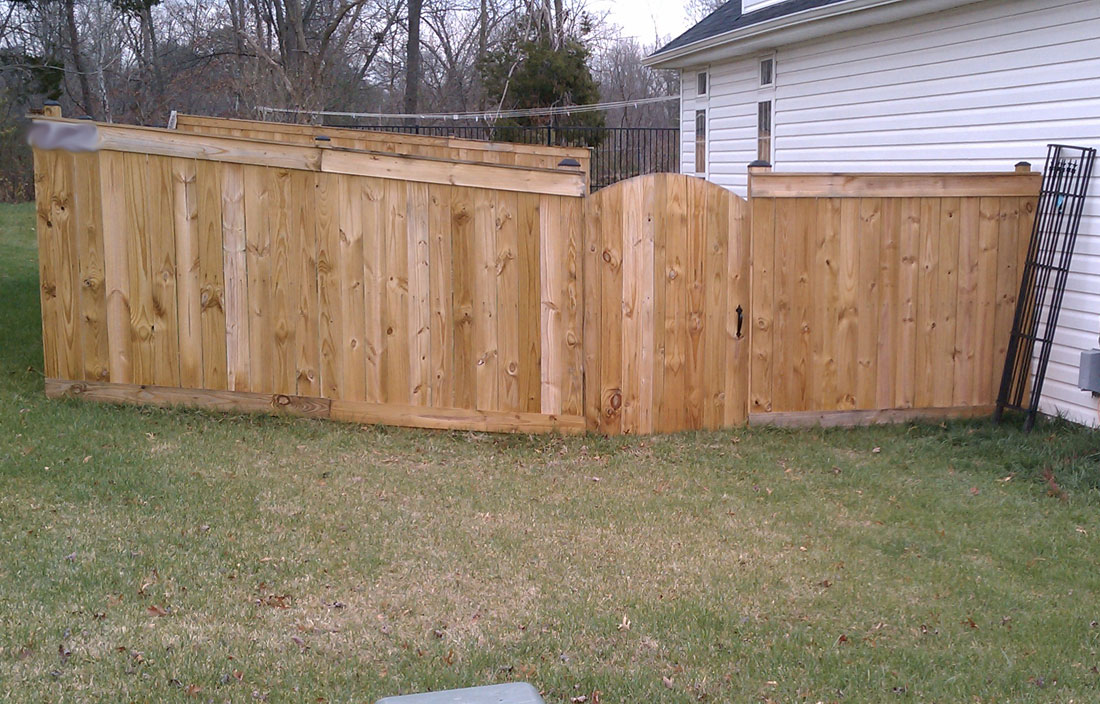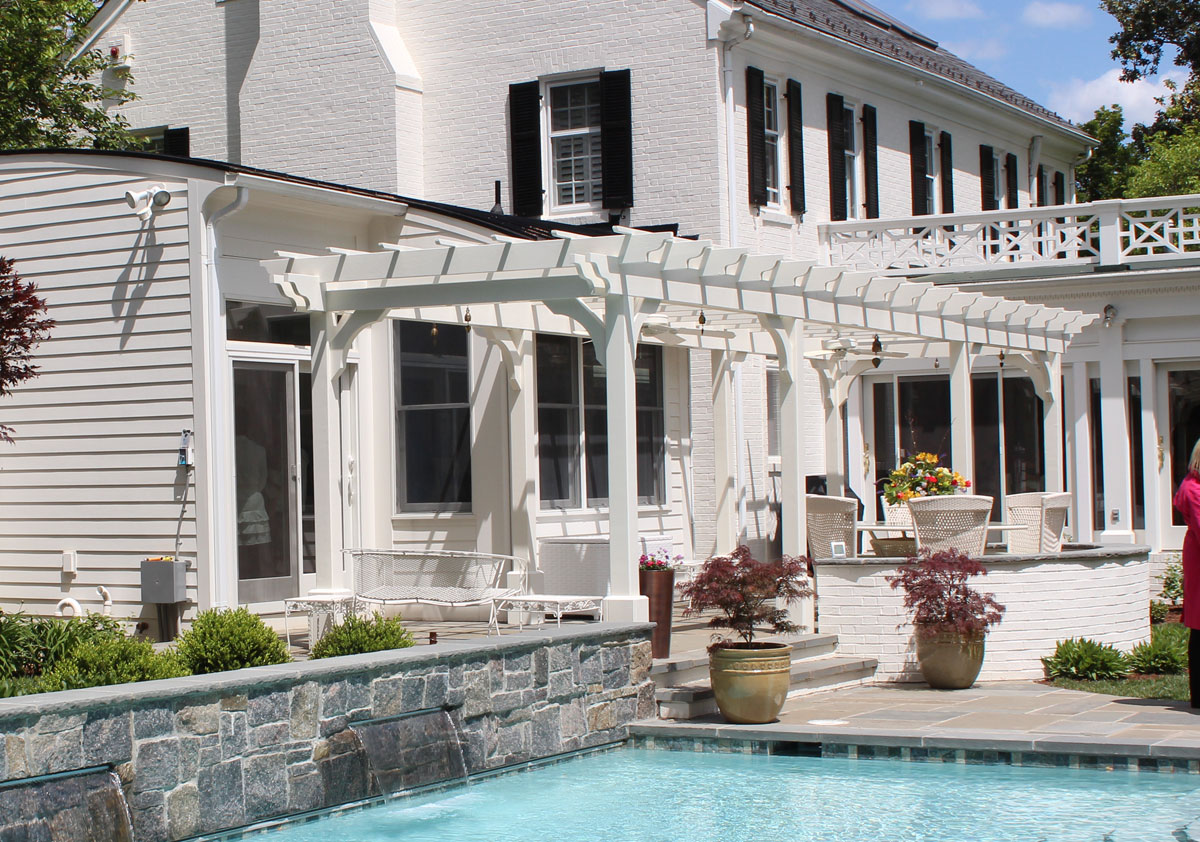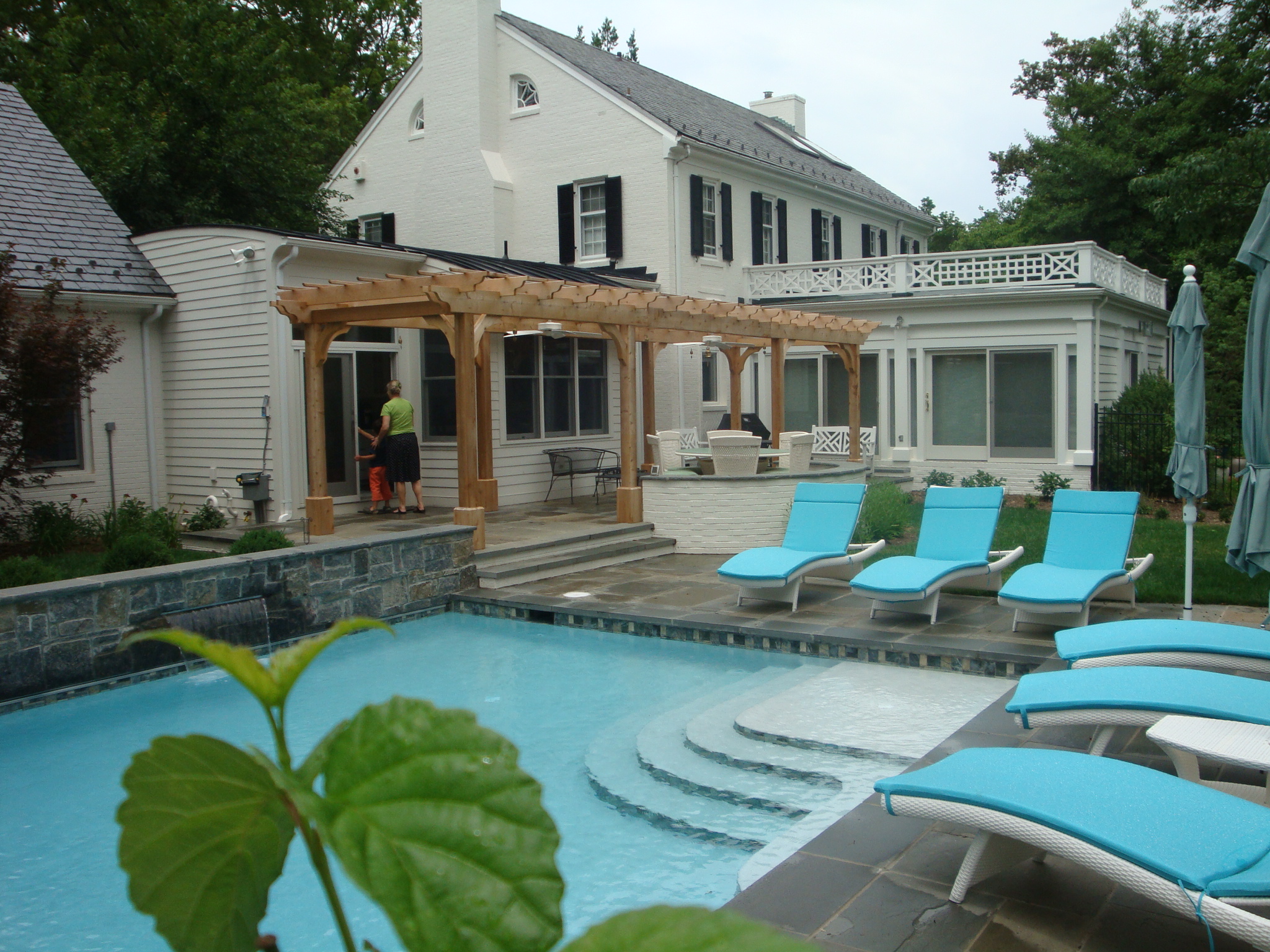We visited our friends Stephen and Michael at Annefield Vineyards last year and I was a little jealous. Not only is their tasting room/house …
Custom Woodwork
Pros and Cons of Building a Pergola in Northern Virginia
I get a lot of requests from people interested in adding a pergola to their landscape. They’re cool to begin with and they’ve been made all …
Transparency in the Landscape
As modern humans, we spend our days surrounded by solid, imposing "stuff". We live in big brick and wood houses, drive two-ton steel …
Fredericksburg Pool, Patio & Pergola Design
This week I stopped off to check in with a landscape design client in Fredericksburg, Virginia. This is probably one of my favorite projects …
How to Build a Round Deck
Step 1: Build a square deck. Step 2: Cut off all the corners. In all seriousness, building a round deck isn't all that different from …
Making Multi-Level Decks Work
I'll be honest, I don't really care for multi-level decks. They can look stunning, but if they're not well designed they can be a waste of …
Pros and Cons of a Fiberglass or Wood Pergola
"I want zero maintenance." If you wanted to know how many times I've heard these words in my career as a designer, I'd say to take the …
Commercial Landscape Design Project- Old House Vineyards in Culpeper, Virginia
Yes, I do commercial design work as well. Not bid work- I'm a firm believer that when the only deciding factor is the lowest bid, everyone …
What to Look for in a Trellis
The #1 most important thing? Scale. I hate to say it, but the majority of off-the-shelf trellises and arbors you can buy are woefully …




